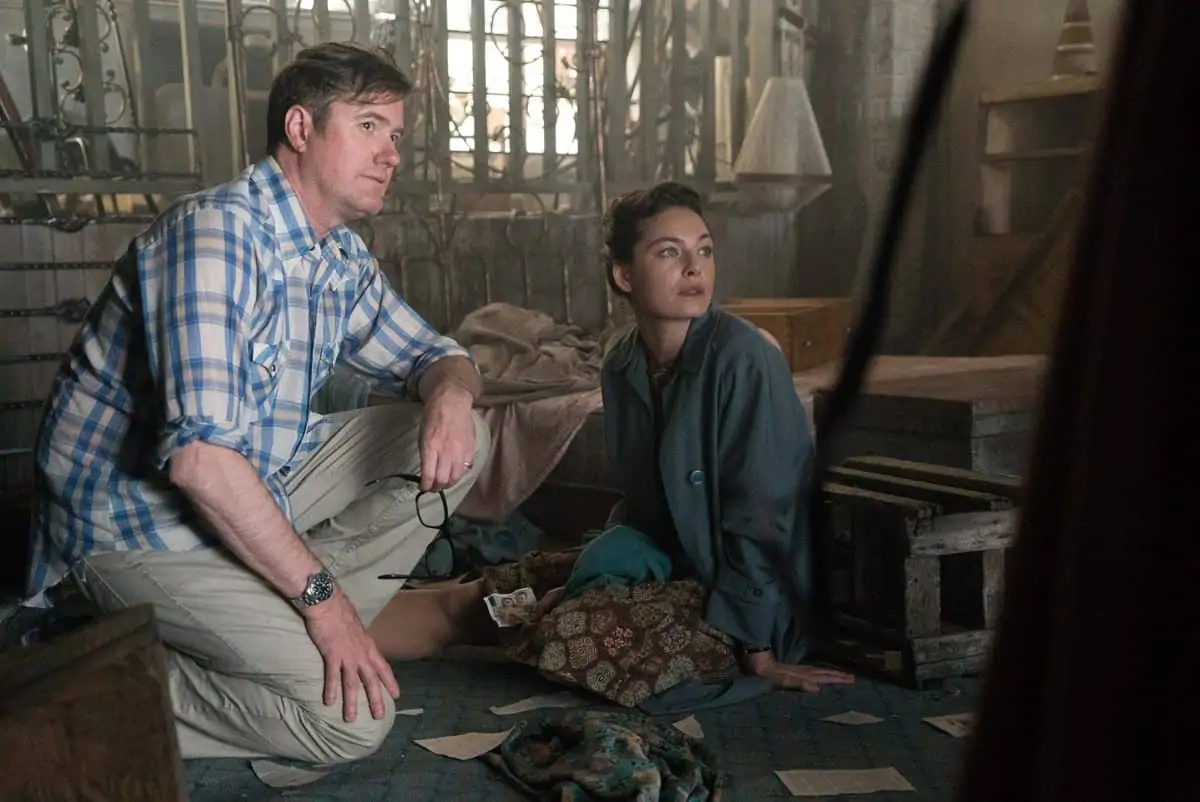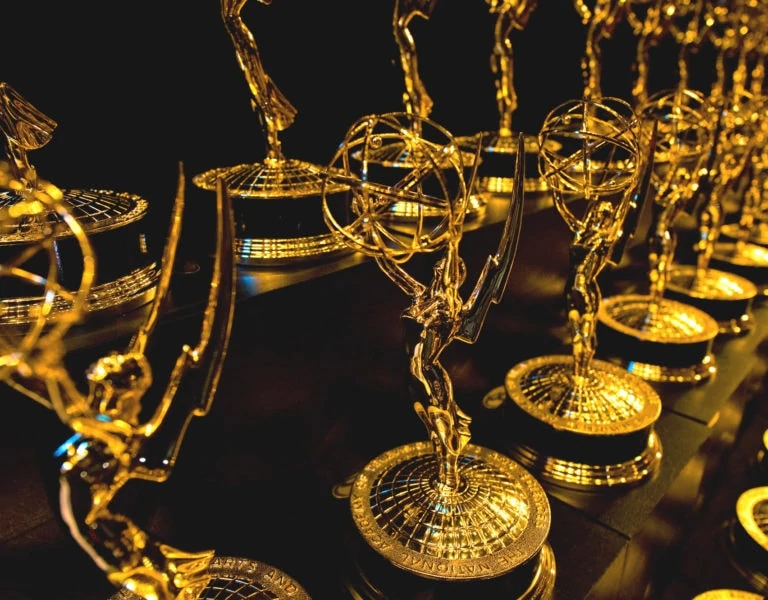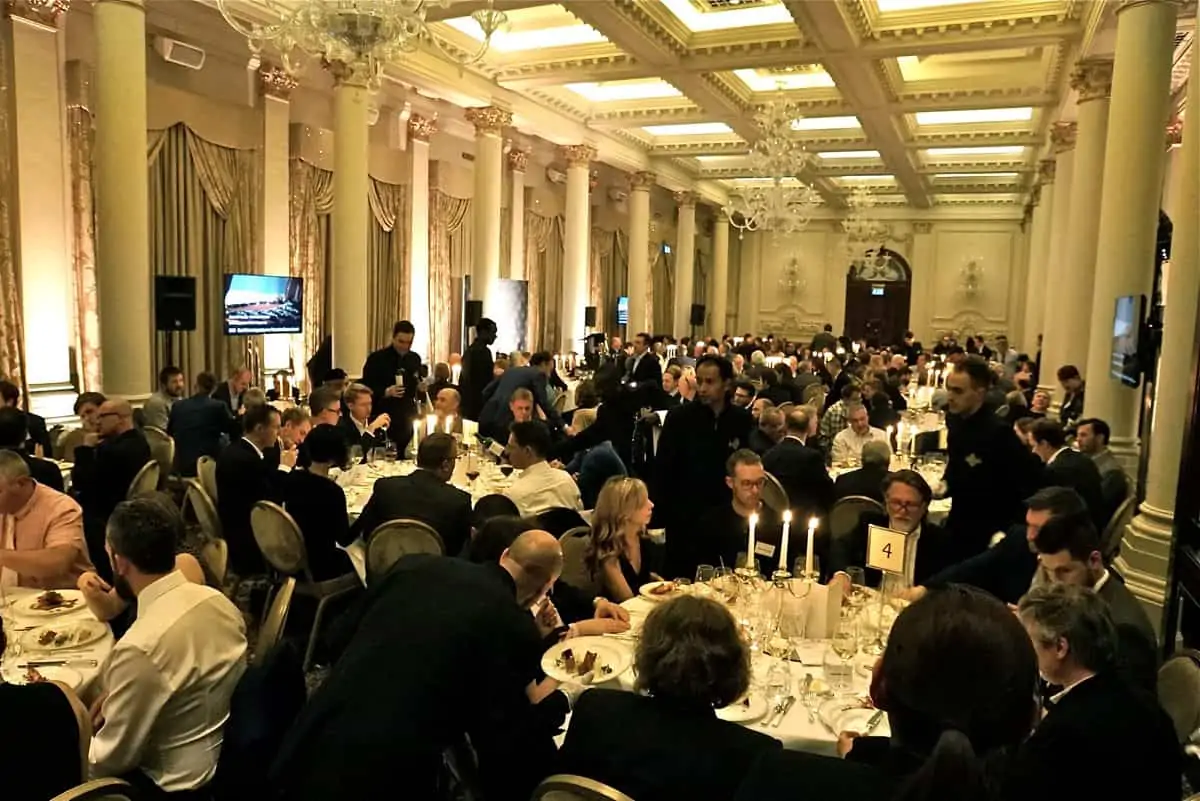Emmy Night Elation
Across the Pond / Mark London Williams

Emmy Night Elation
Across the Pond / Mark London Williams
And so, as we head into "contender" season for the Oscars, ASC awards, and the other stops in L.A.'s late winter rondele of weekends-in-formal-wear, we pause to gather some insights from the current crop of winners - DPs who took home statues on Emmy night.
Of course, this isn't the same Emmy night broadcast on network TV - the one where Game of Thrones won, one last time, for best drama, Fleabag cleaned up, and Gwendolyn Christie evoked New Testament-era fashion on the red carpet.
No, we refer instead to the weekend before that, which the TV Academy refers to as the "Creative Arts Emmys."
These are mostly all the below the line categories - the ones that Oscar tries to either shoehorn in during its single broadcast, or relegate to commercial breaks - but also include some guest starring categories and documentary / non-fiction awards, as well.
And quite a few cinematography categories - i.e. single camera for an hour show, for a half-hour show, for a multiple camera series, for best movie or miniseries, etc. So a larger group of DPs gets to be honored with nominations, and a smaller handful with the award.

One of those taking home a statue was M. David Mullen (above), profiled here in our previous column, who won for his work on the Marvelous Mrs. Maisel, specifically the "Simone" episode, edging out Jonathan Freeman's work on the "Iron Throne" episode of, that's right, Game of Thrones - one of the few tech categories in which the show didn't prevail (and yes, we are fully aware that as much art as tech goes into work of DPs!)
Mullen told us that he was "very proud that the Academy members have recognized all the creative work accomplished by the people working with me, particularly my camera operator Jim McConkey, but also all the grips and electrics both in New York and in Paris that helped make this episode so special."
It is hard, after all, to vote against a well-lit Paris. As for Thrones, we're not quite done with it either - more on that in a sec.
Another of the evening's winners was Chris Teague, in the half-hour, single camera category, who we'd also interviewed here, for the concluding episode of Russian Doll, "Ariadne" - and yes, you are free to think of extricating yourself from a maze or labyrinth when you hear that title (just as the characters were doing).
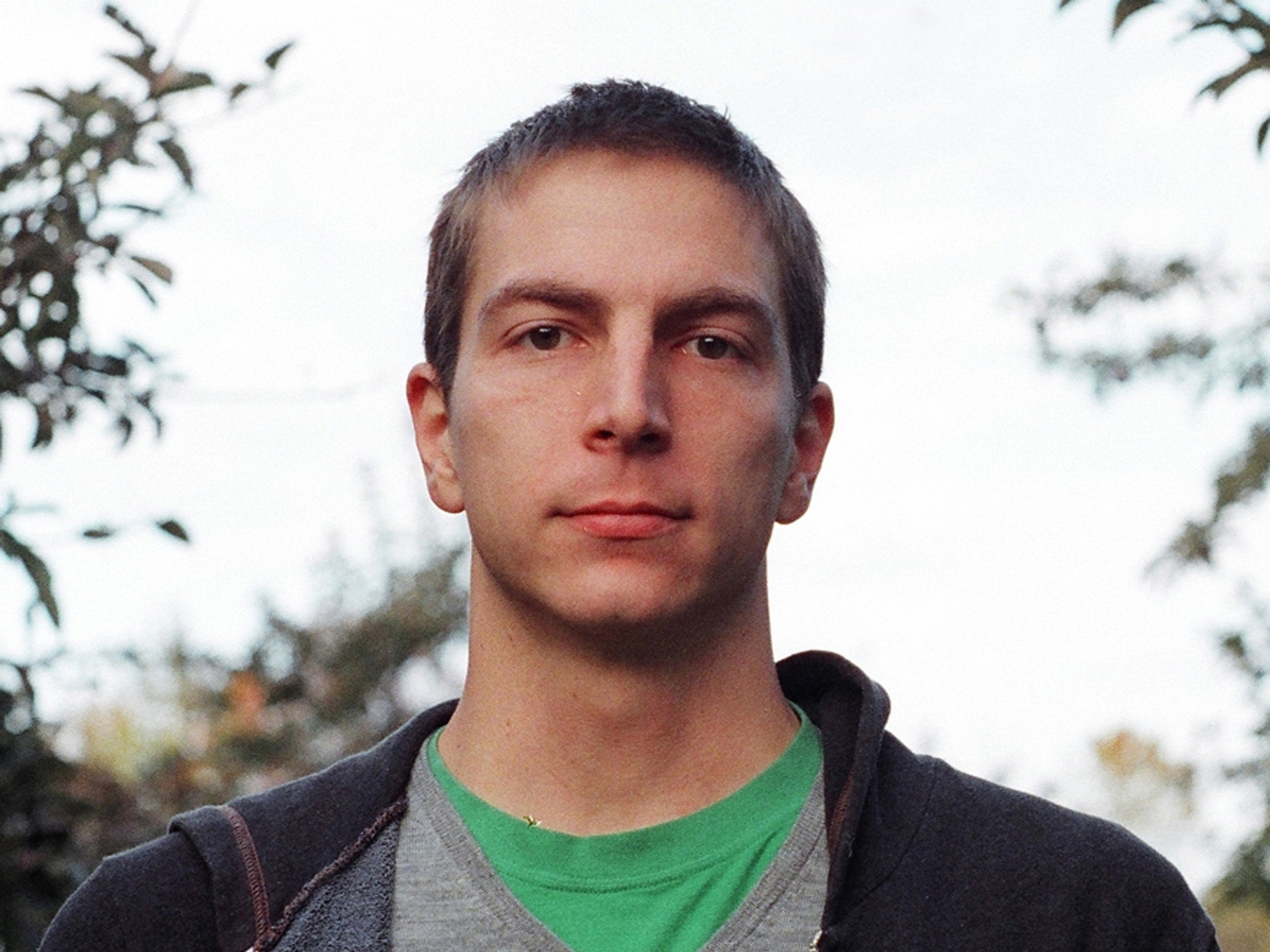
What was it about that particular episode, we asked Teague, that he thought made it the nominated one?
"Ariadne," he told us, "was full of visual concepts that I felt encapsulated the theme of duality in the show, from the spinning overhead shot, to the split diopters and split screen work. It also showcased many of the locations, from the loft apartment to the bodega. Part of picking the right episode to submit is about finding a four-minute section that features your best work, since the nominees are chosen based on those clips."
Ideally, then, that clip reflected "the use of saturated color and very shallow depth of field were key elements that made Russian Doll stand out from my other work," though Teague's other work includes the noteworthy GLOW, also on Netflix. "There is also," he added, " more frenetic energy to the camerawork that is inspired by the main character."
"I feel like we all work so hard in this business that we don't often get opportunities to look back and appreciate the efforts and results of our work…the work we do is such a deeply integrated collaboration between so many multifaceted technical departments"
- Chris Teague, DP on Russian Doll

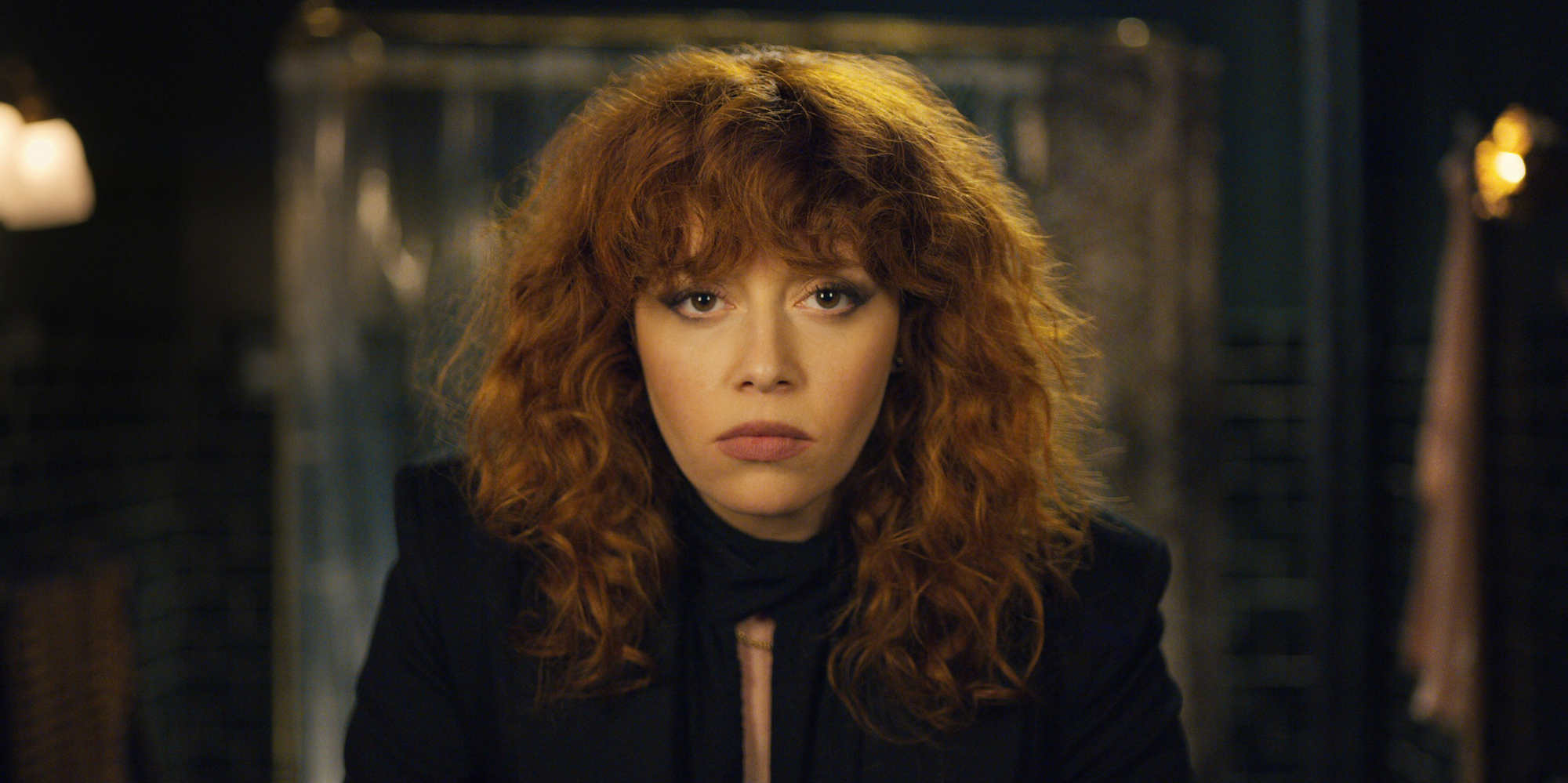
It should also be noted that not only was this Teague's first Emmy win - it was his first nomination! About which he still finds it "hard to believe that I won this award. The best part of this whole awards process has been getting to see the Russian Doll team again and to share in the success of the show together. I feel like we all work so hard in this business that we don't often get opportunities to look back and appreciate the efforts and results of our work…the work we do is such a deeply integrated collaboration between so many multifaceted technical departments and also between so many talented performers and creators that any one person singled out is also an indication of dozens if not hundreds of other talented people who contributed a great deal to the show."
And speaking of those contributions, it usually takes a village - or at least a crew - in the faster paced world of television to help quickly establish an episode's look, mood, etc. Such was the case for Game of Thrones, which, while losing out in the cinematography category this year, won, once again, a VFX award, for Joe Bauer and his crew.
Among whom were those quick to credit their work with the cinematographers. That includes Michelle Blok, the previs supervisor for the series, who works with The Third Floor a "visualization studio,"- where previs is a specialty.
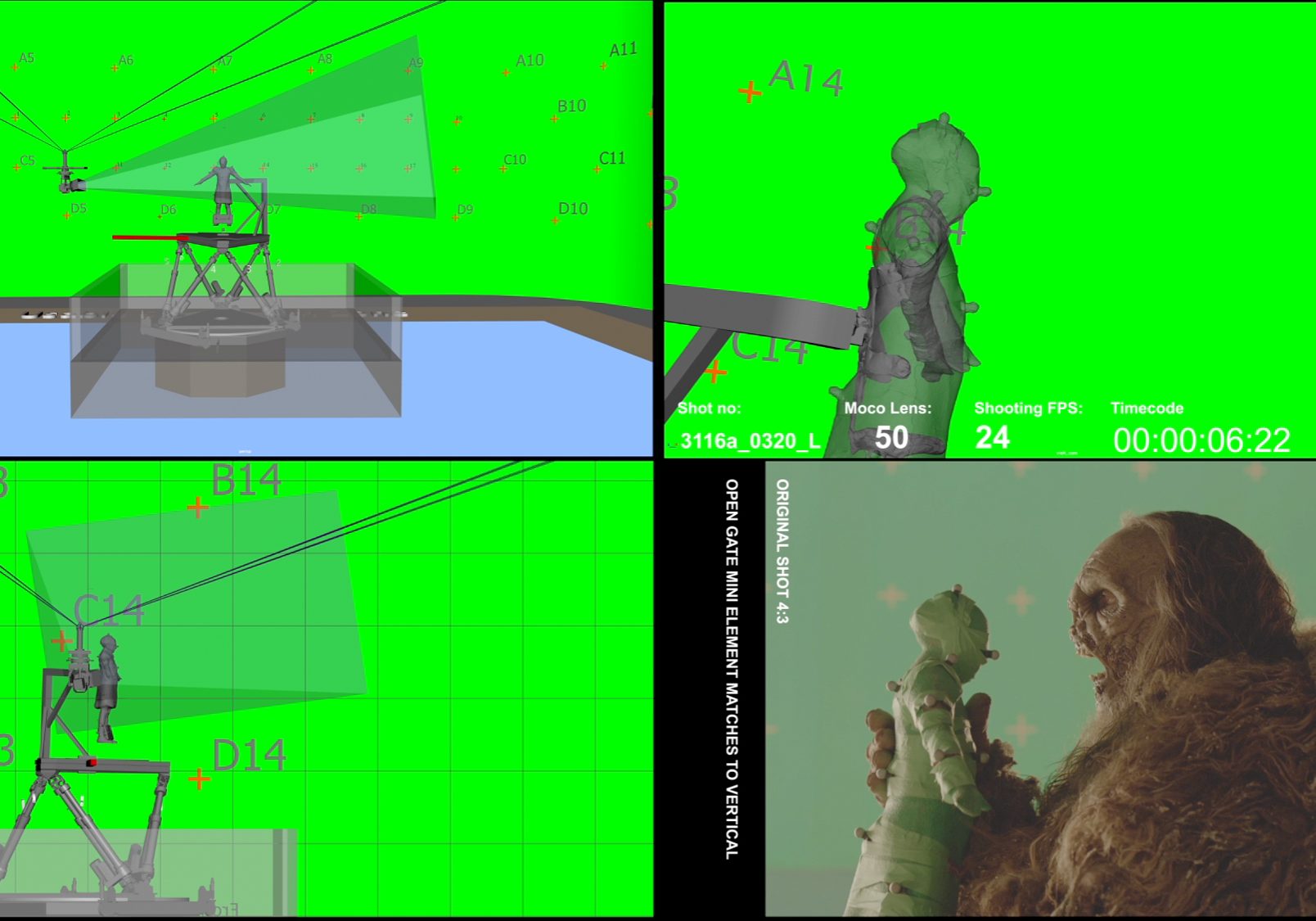
"The demands of the show - and the high bar that was set for the believability and scope of the sequences, really called for us to all be in sync, to develop the best creative ideas and have a collective gameplan for being able to pull off everything that was to be done"
- Michelle Blok, The Third Floor, Previs Supervisor on Game Of Thrones
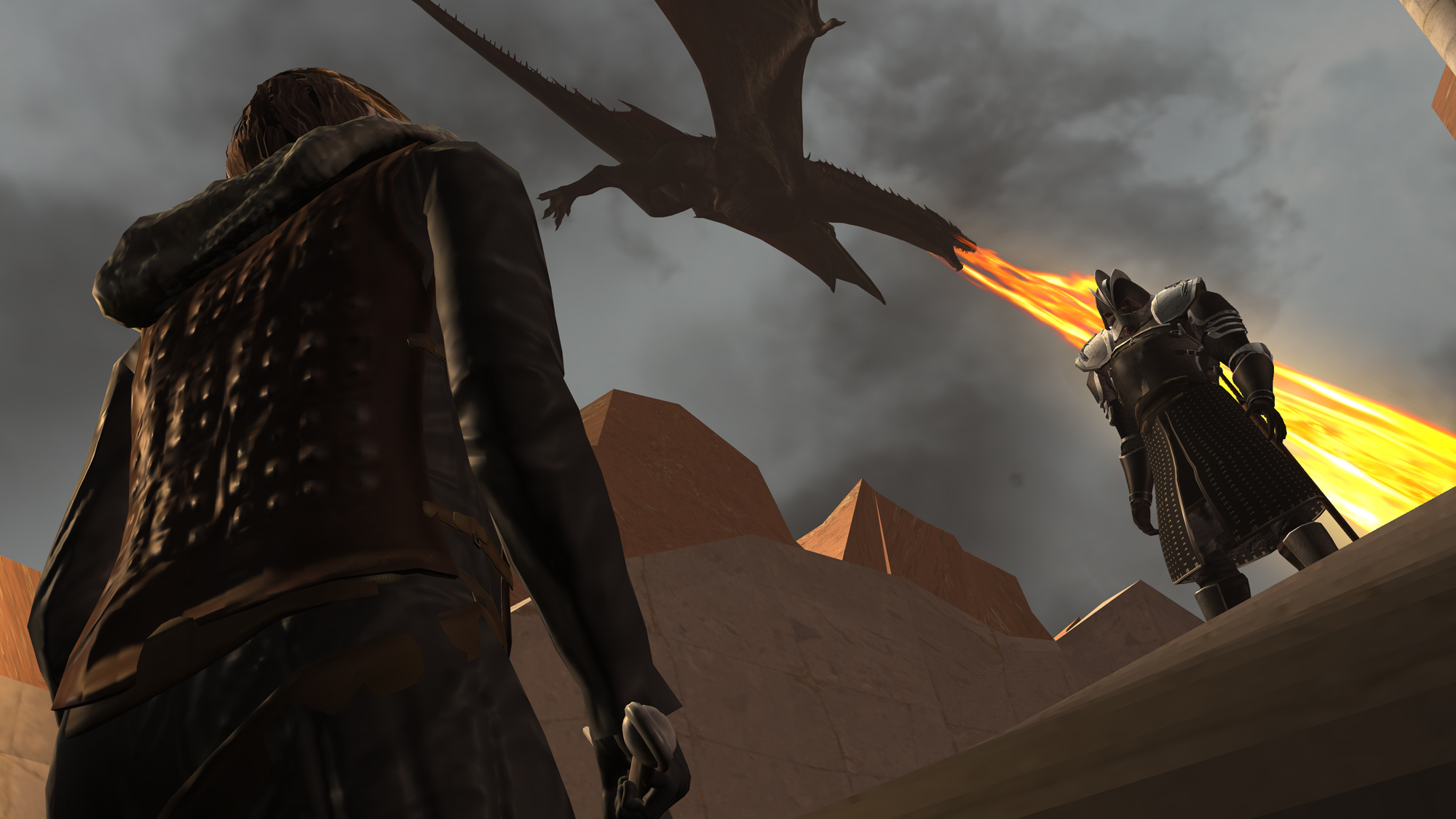
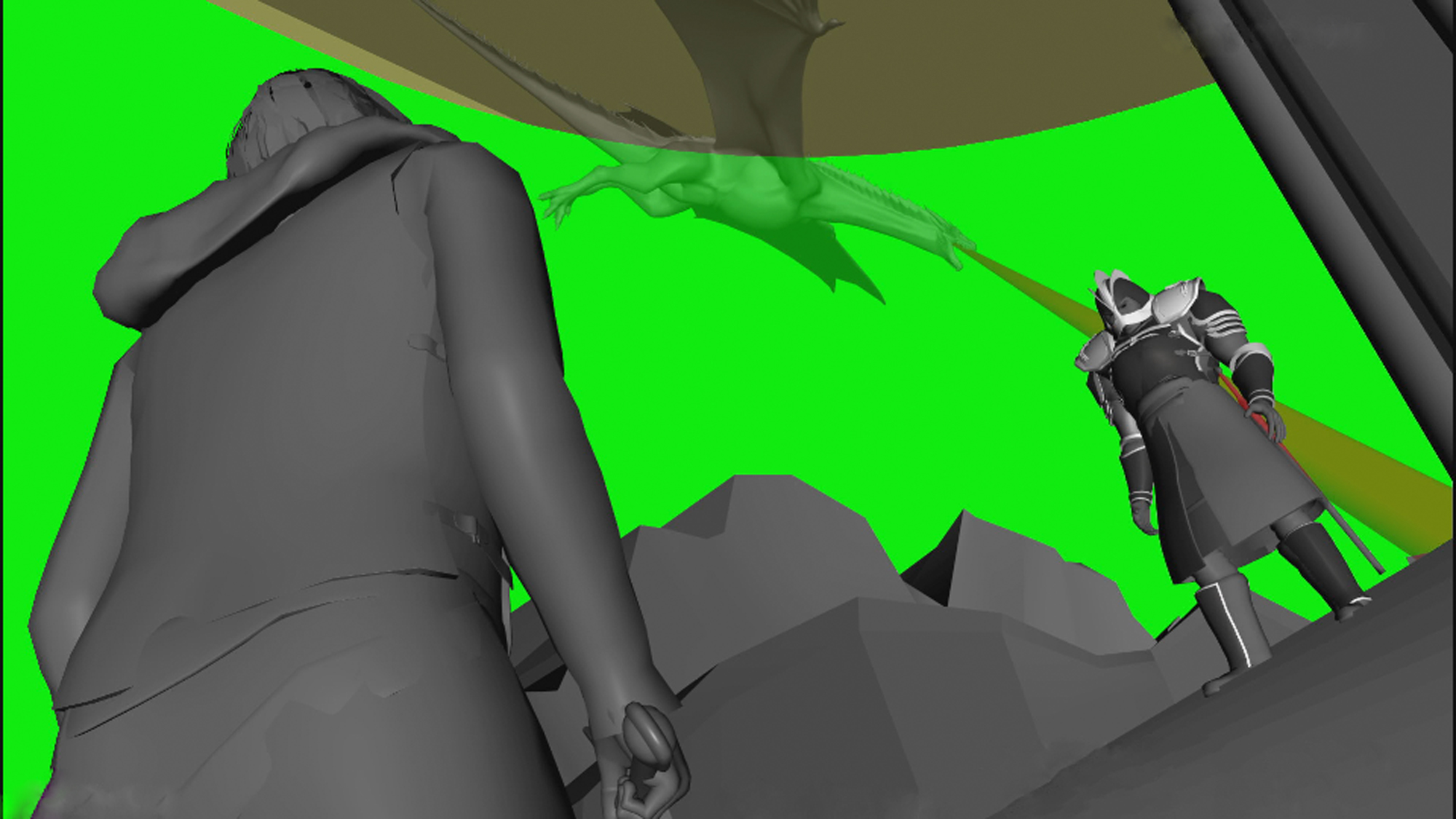
"Often," she notes, "we would assess every camera position that had been established during the previs process, each greenscreen setup and every lighting setup and from that, determine which shots could be filmed together and where the crane bases or camera tracks could be best placed in order to minimize the number of setups."
Referencing "The Long Night," the third episode in the concluding season, with the culminating battle between the living and the dead, she says "we worked with Cinematographer Fabian Wagner to explore ideas of using light and dark to create a sense of unease and terror that Episode Director Miguel Sapochnik was going for. As the Dothraki get lost in the darkness in the initial attack, the story of their unknown fate is told through the extinguishing of their fiery araks. Dark-into-light was also important for the wight reveal, when the magnitude of the undead army finally becomes apparent.
"The approaching storm was another opportunity to play with seen and unseen, like in a classic horror film. We looked at various lighting and storm scenarios with Fabian and his choice was used to inform the previs. The scene also needed to establish a sense of geography despite the chaos, so we did things like having a light source in the previs that always cast from Winterfell relative to the characters."
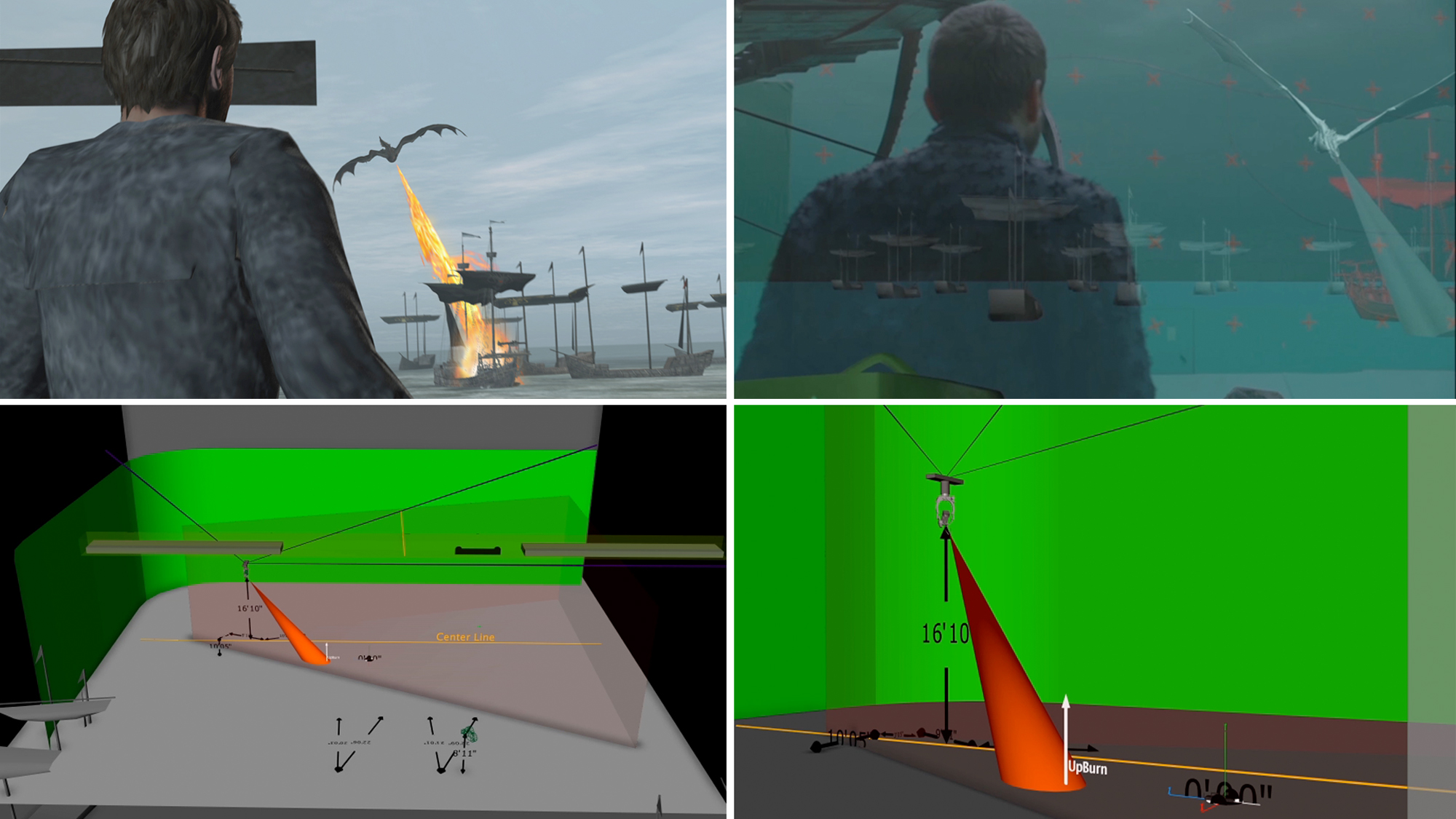
As for the nominated episode, "The Iron Throne," she continues that they "had the chance to work closely with DoP Jonathan Freeman to help develop key action using virtual scouting. Our artists, including Senior Real-Time Technical Artists Adam Kiriloff, were based alongside the art department and modeled up sets like the Red Keep Plaza, King's Landing Gate and the Throne Room that could be explored immersively using a VR system The Third Floor developed called Pathfinder. Jonathan, Episode Directors Dan Weiss and David Benioff and other crew were able to view the environments while wearing a head-mounted display, or while working with our artists to frame up shots via virtual cameras."
Among the scenes where Freeman used Virtual Reality, were "Dany's speech on the stairs, which Jonathan blocked as an animatic working with The Third Floor's VR set scouting and virtual camera crew. The virtual cameras replicated the ARRI Alexa, providing an accurate representation of what could then be reproduced on set. Once the animatic was approved, our previs artists added animation and camera moves to the shots and later helped develop a shooting plan that informed the final set build, stairs design and vfx crowd passes.
"Shots through the Courtyard and in The Throne Room were also built on animatics prepared by Jonathan and the virtual camera team. Many variations of coverage and angles could be explored and exported as still-frame photoboards, building up the final shot list. The VR work then informed our previs animation and the dragon pre-animation from Pixomondo, leading up to a stitched dragon performance that ran the entire length of the scene."
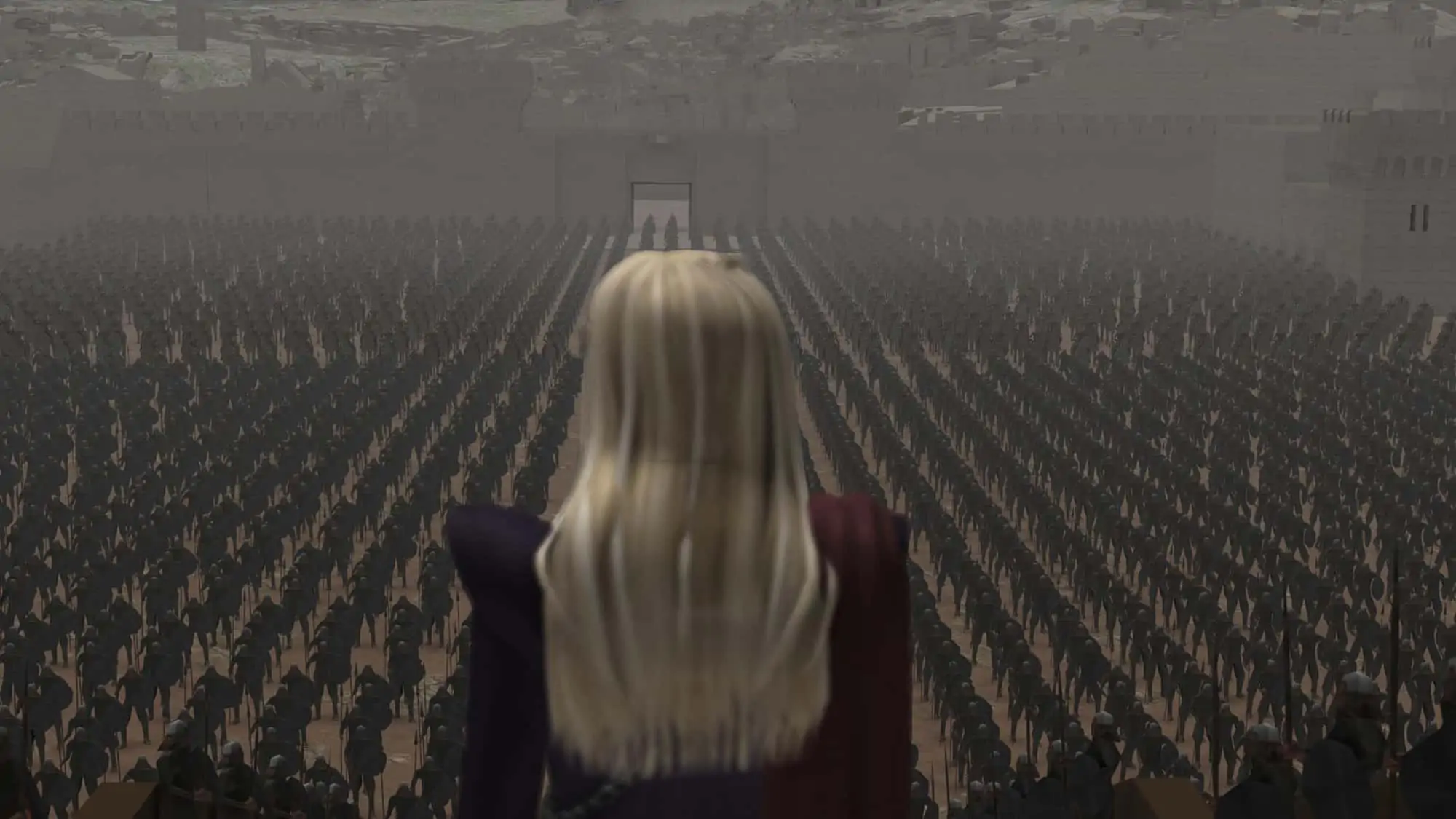
"It was amazing," Blok concludes, 'to work with so many cinematographers and directors, as well as the production design, stunt, special effects and visual effects teams on multiple seasons of Game of Thrones. The demands of the show - and the high bar that was set for the believability and scope of the sequences, really called for us to all be in sync, to develop the best creative ideas and have a collective gameplan for being able to pull off everything that was to be done, be it someone riding a dragon, someone killing a giant (or being killed by one) or a city being destroyed street by street."
And while we can't necessarily promise a plethora of dragons in the weeks ahead, we'll continue to look at the various grails of the unfolding season, as we see you in another month.
Meanwhile, send a raven our way: AcrossthePondBC@gmail.com, @TricksterInk


